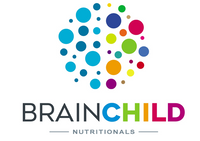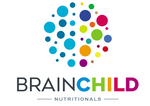7 Steps Towards An ADHD Friendly Diet for Kids
Eleven percent of children from ages 4 to 17 have been diagnosed with Attention Deficit Hyperactivity Disorder, also known as ADHD. The majority of them take ADHD medications to control the symptoms, according to the Centers for Disease Control and Prevention.
Now, a round of new, peer-reviewed studies have revealed that simple changes in diet can dramatically help manage it. Even better, it can also help in behavior of children without ADHD. So what are the 7 steps towards an ADHD diet for kids?

Step 1 - Remove Artificial Colorings
Children love color, but artificial colors are best kept out of the diet of an ADHD child. Fruits and vegetables are a much better source! Artificial dyes — especially Red #40, Blue #2, Yellow #5, and Yellow #6, trigger hyperactivity in many kids, notes Columbia University Medical Center psychiatrist David Schab, MD, MPH. In addition, they serve to “get children interested in foods that are globally unhealthy — Pop-Tarts, sodas, processed cereals, energy bars.” These highly processed foods also invariably contain a large amount of sugar, which makes it harder to manage blood sugar levels.

Step 2 - Eliminate Food Additives
Kids with ADHD can also benefit from the elimination of food additives. This is especially true for the preservative sodium benzoate, from your kid’s diet. It is most commonly found in soda and other carbonated beverages, fruit juices, jams, salad dressings, condiments, and pickles. Be sure to read ingredients labels and beware of fast-food menu items, which can contain a significant dose.

Step 3 - Remove Salicylates
If you have a child with ADHD, try removing medicines and foods that contain salicylates. It is found in hundreds of medicines, including aspirin, as well as some fruits. In some people, the side effects of salicylates are asthma, fatigue, and, notably, the symptoms of ADHD.
Step 4 - Supplement Key Nutrients
Over the long term, mineral supplementation is an integral aspect of an ADHD diet plan. Supplement your kid’s meals with targeted micro-nutrients (vitamins and minerals), including vitamin D, the range of B vitamins, omega-3 fatty acids, amino acids, calcium, iron, magnesium, and zinc. Be sure to consult with one of our experts to find the right supplementation for your child.

Step 5 - Focus on Gut Health
Consider your child’s gastrointestinal health when working on your ADHD diet menu. Working with your doctor, you may want to add probiotics to his or her supplements, along with the supplement tricycline (which contains berberine, artemisinin, citrus extract, and walnut hulls). This treatment is designed to improve problems related to leaky gut, a condition in which damaged intestinal walls release undigested food particles into the bloodstream. Leaky gut is associated with a range of inflammatory and immune responses.

Step 6 - ADHD Elimination Diet
ADHD and diet research suggests that an elimination diet can be an effective way of finding dietary triggers. Remove casein (found in dairy products, such as milk and cheese) and gluten (found in wheat, barley, and rye) from your child’s meals and see if it makes a difference. Reintroduce these substances after they have cleared the system (three weeks for casein, three months for gluten) only if no positive changes have occurred with elimination.
If your child is still acting hyperactive, try a restrictive diet of water and organic rice, turkey, lamb, lettuce, carrots, pears, and other whole foods that rarely cause food allergies. See if your child’s symptoms subside. If so, slowly reintroduce foods to his or her meals to see which items cause symptoms to reemerge.

Step 7 - The Best Diet for Children with ADHD
What is the best diet for ADHD? Consider a low-glycemic eating plan high in protein and fiber, and low in carbs, such as refined carbohydrates and sugar. Rebuild your child’s diet based on whole, organic, nutrient-dense foods.
NOTICE: THE CONTENT IN THIS ARTICLE ARE PERSONAL OPINIONS. FOR EVERY CHANGE IN A CHILD DIET CONSULT A CERTIFIED HEALTHCARE PRACTITIONER.






